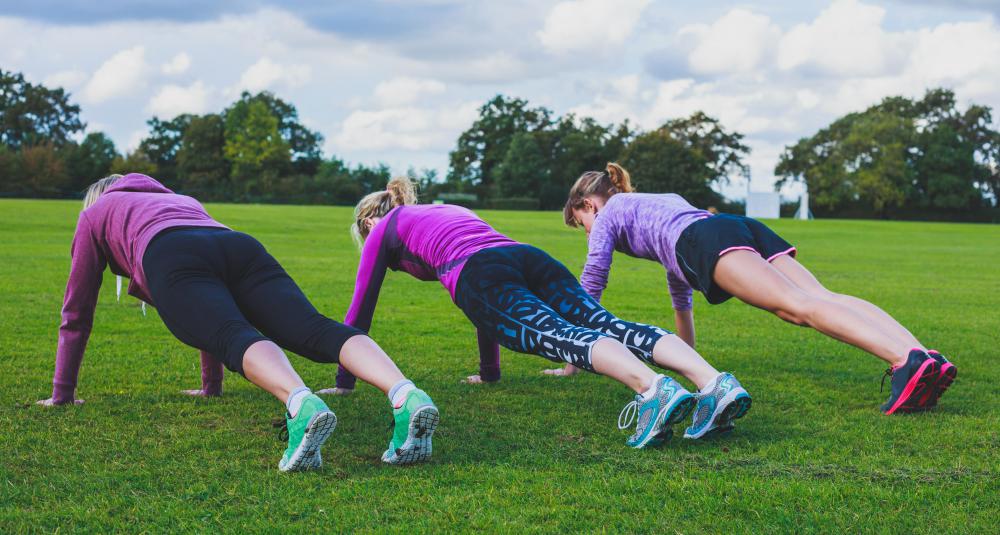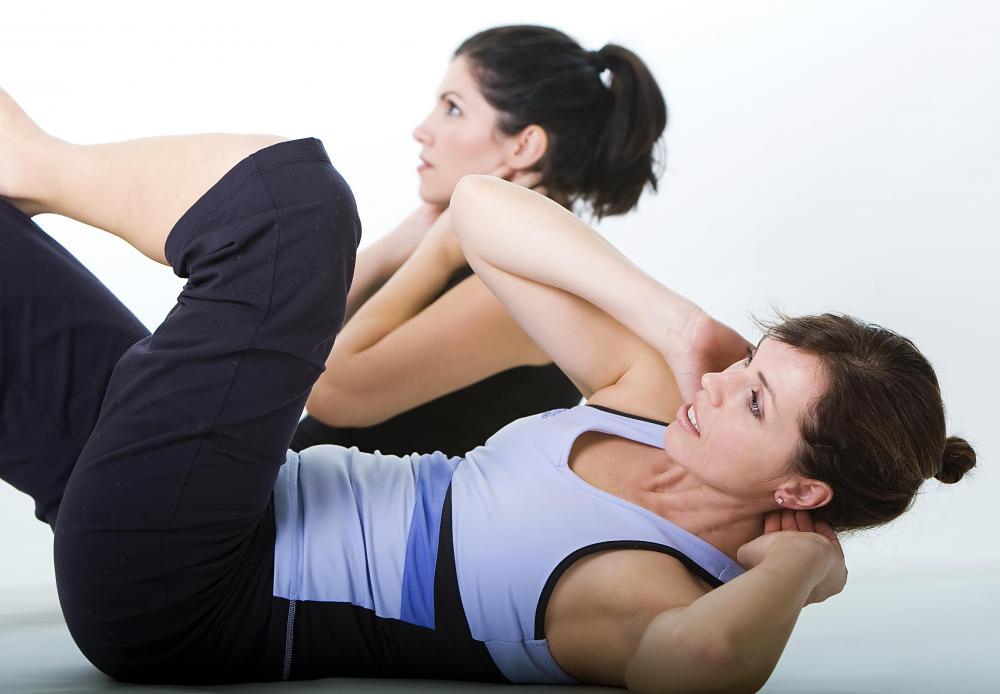At WiseGEEK, we're committed to delivering accurate, trustworthy information. Our expert-authored content is rigorously fact-checked and sourced from credible authorities. Discover how we uphold the highest standards in providing you with reliable knowledge.
What are Plyometric Exercises?
Plyometeric exercises are sequences of short physical movements designed to strengthen core muscle groups and give them more power. There are a couple of different methods and specific approaches, but in general the practice focuses on quick, “explosive” movements that cause a rapid extension and contraction of a person’s muscles. Routines can be tailored for certain results, but usually include jumps from various heights and weight-bearing exercises like push-ups, pull-ups, and squats. Taken in isolation, no piece of a plyometrics workout is usually very challenging. It’s when they’re strung together that people begin to see results. Most routines include multiple repetitions and circuits that focus on muscular contraction, extension, and strength. When done regularly, these sorts of exercises can make people faster and stronger overall. Like most exercises, though, the routine requires dedication and attention to things like interval timing, intensity, and rest times.
s
Basic Concept

The main goal of plyometric exercises is the development of muscular power. When done properly, they can increase muscle power output without necessarily increasing maximum strength and aerobic capacity. The exercises are generally used as a component of a broader workout program for improved athletic performance.
Main Groups and Types of Exercises
These sorts of exercises are commonly classified into four groups, namely place jumps, short bouncing exercises, extended bouncing exercises, and depth jumps. A typical training program involves two to three days per week of a routine, and most routines are designed to last anywhere from 15 to 30 minutes.

The intensity of the training means that it’s usually only recommended for well-conditioned athletes who are familiar with the techniques and safety considerations. Aspects of plyometric training can, however, be beneficial for most exercisers as long as common sense and safety issues are followed to prevent injury. Many gyms and fitness clubs offer plyometric courses and training programs to teach people the basics. Once a person masters the techniques, he or she can often repeat the exercises at home — specialized equipment isn’t usually required.
Focus on Muscle Contraction

Muscle movement occurs in a muscle when the fibers contract. There is, however, a maximum force at which some muscles can concentrically contract. Plyometric exercises are used to alter that muscular and neurological chemistry to improve the ability to convert strength to speed in the shortest amount of time.
Stretch Shortening Cycle
These sorts of exercises focus on the rapid extension and recoil of muscles. In a hand-clap push-up, for instance, the chest muscle is lengthened with the downward force of the body. Immediately before the recoil of the chest muscle, the greater force needed for the concentric contraction will be produced through the storage of elastic energy, in much the same way that a rubber band snaps back after being stretched out. That elastic energy dissipates quickly, however. To be effective, the transition time between eccentric contraction and concentric contraction, called the amortization phase, must be quite short. Experts usually recommend that it be only one or two seconds, if possible. This quick-turnaround process is called the stretch shortening cycle, and is one of the key elements of plyometric training.

Most of the exercises in a routine can also impact the muscle’s stretch reflex, which helps protect a muscle against unnecessary injury. Two neural receptors of the muscle are responsible for the stretch reflex. These are the muscle spindles, which lie parallel to the muscle fiber, and the Golgi tendon organ (GTO), which is located deep within the junction of a muscle and tendon. The GTO relaxes the muscle in a stretch when it senses too much force, while the muscle spindle contracts the muscle to protect it from being stretched out too far.
Maintaining Continuous Velocity
At the end of a rapid eccentric contraction, the muscle has typically reached a great length at a high velocity. That may cause the muscle spindle to react and enact a powerful stretch reflex, thereby further enhancing the power of the concentric contraction to follow. That sensitivity of the muscle spindle to velocity is another reason why the amortization phase must be extremely brief for the plyometric effect to be successful.
Tips for Success
A person typically should perform plyometric exercises on soft or cushioned surface, and proper, supportive footwear is important, too. Exercisers should usually make time to thoroughly warm up before beginning. A person should begin slowly with small jumps and land softly to absorb shock. Beginners particularly should typically do no more than 75 to 100 repetitions at once. To avoid muscular degeneration, a person should maintain good nutrition and allow plenty of rest between sessions.
AS FEATURED ON:
AS FEATURED ON:














Discussion Comments
there is a lot of info packed into a few paragraphs. This writer made a difficult concept understandable.
Post your comments